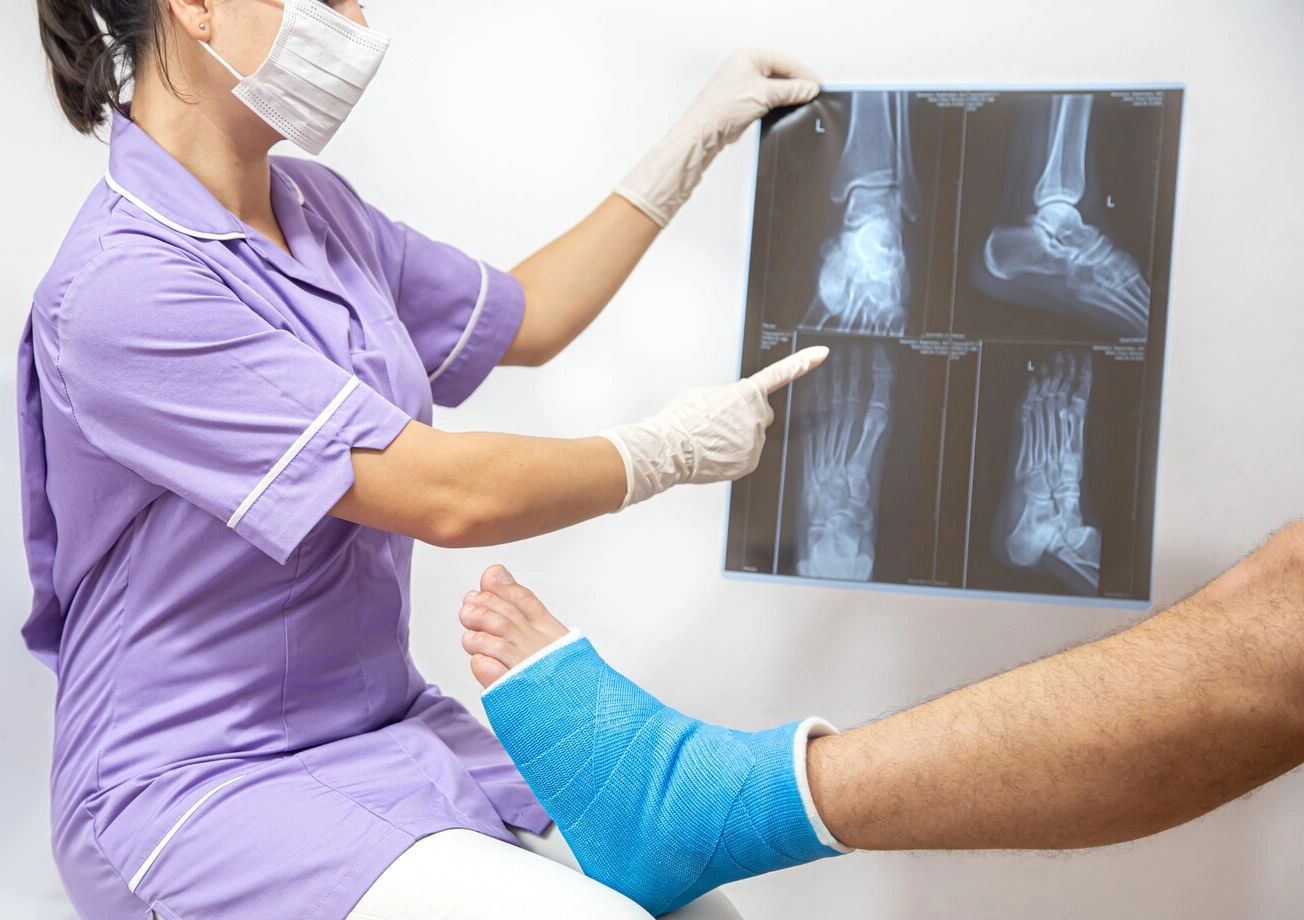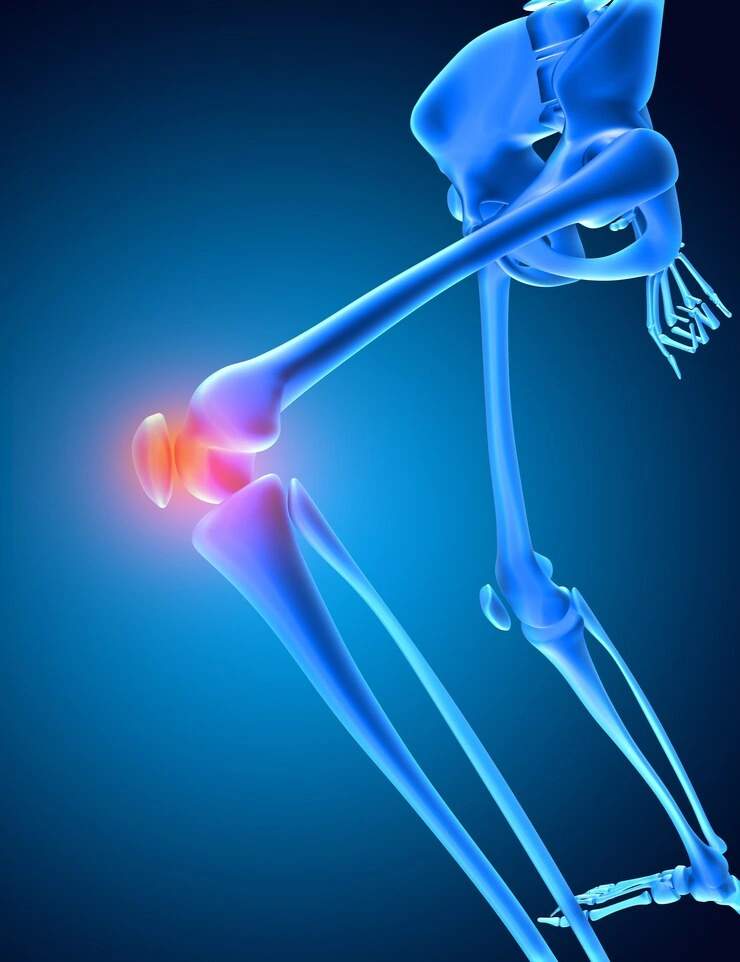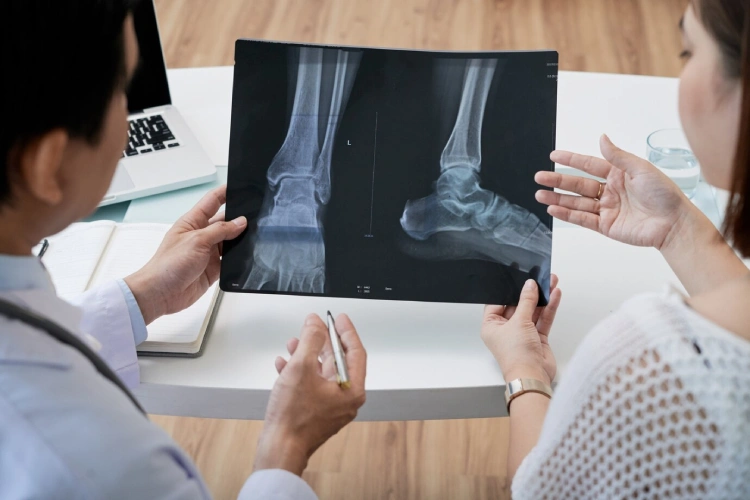
Bone Trauma & Fracture
Have you ever wondered how a fracture occurs or why we should opt for the best orthopedic specialists? Well! A fracture occurs when there is a slight break in the continuity of a bone. It happens due to increased-force impact, falls, accidental falls, sports injuries, or tension. Furthermore, bone fractures can also result from severe medical conditions that reduce the strength of the bones, such as cancer and osteoporosis. It can occur in any body part and might be complete or partial. Bone fractures are classified into several types, including closed fractures, which harm & break the bones without harming surrounding tissues, and mixed fractures, which cause tissue harm and penetrate the skin.
Moreover, appropriate medical attention is imperative for bone fractures to ensure proper healing, which often involves immobilization with splints or casts, rehabilitation therapy, and surgical intervention. So, if a fracture occurs suddenly, it is best to seek bone fracture treatment in Ghaziabad at the best orthopedic clinic.
Different Types of Bone Fractures
Bone fractures can be categorized into multiple types based on their appearance, severity, and location. Here, we have mentioned some common types of bone fractures that you must know.
1. Closed (Simple) Fracture
Broken bone segments that do not break through the skin are commonly known as closed fractures. In this situation, the surrounding soft tissues stay intact without being harmed.
2. Open (Compound) Fracture
It is a type of broken bone situation in which the bone pokes through the wound and can be seen to examine. Furthermore, an open fracture is also known as a compound fracture.
3. Greenstick Fracture
It is one of the common bone fractures in children and involves an incomplete break where the bone twists but doesn’t entirely separate.
4. Displaced Fracture
In this kind of bone fracture, the broken bone fragments separate from their position and are no longer aligned appropriately.
5. Non-displaced Fracture
In a non-displaced fracture situation, the bones retain their intact anatomical position despite the fracture.
6. Stress Fractures
The small cracks that develop in bones due to overuse or stress are known as stress fractures. Moreover, people with osteoporosis or individuals who are athletes are more inclined to stress fractures.
What are the Vital Causes of Bone Fracture?
Sometimes we don’t understand the reason behind the bone fracture. That’s the primary reason we have mentioned some major causes of bone fractures that you must know before visiting the orthopedic clinic for rehabilitation.
1. Trauma
Sudden accidents, high-impact falls, physical violence, or sport injuries can cause excessive force on the bones. Thus, it leads to severe bone fractures.
2. Overuse Injuries
Repetitive pressure or stress on a particular bone, such as in people with physically demanding jobs or athletes, can lead to stress fractures.
3. Nutritional Deficiencies
If your body lacks essential nutrients and minerals like vitamin D, protein, and calcium can negatively impact bone health and raise the chance of bone fractures.
4. Osteoporosis
This medical circumstance weakens the bones. Additionally, it makes them more vulnerable to bone fractures, especially in older adults.
5. Bone Diseases
In this case scenario, bone cysts, cancer, or severe infections can weaken the bone structure and raise the risk of bone fractures.

Imperative Symptoms of Bone Fracture
The following pointers, which are mentioned below, state the vital and common symptoms of bone fractures.
1. Swelling
Due to internal bleeding, which led to a bone fracture, you will notice swelling and bruising around the affected area.
2. Inability to move
Depending on the area of the fracture, the individual might experience problems moving the affected area of the body part or putting weight on it.
3. Pain
One of the most well-known symptoms is unbearable pain in the area of the bone fracture. The pain may increase severely with any movement.
4. Deformity
In these case scenarios, the affected body part or limb may appear misshapen or abnormally placed due to the displacement of bone fragments.
5. Visible Bone Protrusion
In compound (open) fractures, the broken bone may protrude through the skin, which needs quick medical attention.

Diagnosis and Test of Bone Fracture
At Kush Orthopedic & Health Centre, we use the following diagnostic approaches to determine if you have a bone fracture:
1. X-ray scan
X-rays are the most standard way to check for fractures. They show clear pictures of the bones and help to find cracks or breaks.
Treatment for Bone Fracture
The treatment for a broken bone commonly relies on the area, type, and severity of the bone fracture. Likewise, common bone fracture treatment possibilities include:
1. Close Reduction
In this non-surgical (closed reduction) procedure, the best orthopedic doctor manually aligns the displaced bone fragments into their proper place without an incision.
2. External Fixation
In cases of intense fractures or when inner fixation is impossible, an external fixation device (pins and metal rods) helps stabilize the bone from outside the body.
3. Immobilization
The affected body part or limb is immobilized using a cast, brace, or splint to restrict further movement and allow the bone to relax and heal correctly.
4. Medication
Orthopedic specialists may prescribe anti-inflammatory drugs, antibiotics (in case of open fractures), and pain medications to handle pain, stop infection, and decrease inflammation.
5. Open Reduction and Internal Fixation (ORIF)
This bone surgical process involves making a surgical incision to realign the bone stabilizing and fragments them with internal devices like rods, plates, or screws.
6. Physical Therapy
After the initial diagnosis, orthopedic specialists suggest orthopedic physical therapy to regain bone strength, range of motion, and mobility in the affected area.
Healing Time for Bone Fractures
The healing period of a bone fracture can differ depending on many factors. Moreover, here we have mentioned some vital elements that state the healing period of a bone fracture.
1. Type of Fracture
Do you know? Simple bone fractures usually heal way faster than complicated or comminuted bone fractures.
2. Age and Overall Health
Young people and those in good health commonly heal faster than elder adults or those with underlying systemic conditions.
3. Sticking to Treatment
Strict adherence to the treatment plan prescribed by the doctor, including immobilization, physical therapy, and weight-bearing restrictions, can imperatively impact the bone fracture healing procedure.
4. Location of Fracture
Fractures in areas with adequate blood supply, such as the lower leg or forearm, tend to heal much faster than those with poor blood supply, like the ankle or hip.
Likewise, simple bone fractures might take 7 to 8 weeks to heal, while more complicated fractures can take several months to heal. Following the doctor’s precise instructions and attending follow-up appointments to observe the healing improvement is vital.

Wrapping It Up!
Bone fractures or bone trauma are common injuries faced by individuals, which occur as a consequence of numerous factors. These factors include underlying medical conditions or accidents. We hope this entire write-up provided you with all the minor to major key points of bone trauma or bone fractures. To let you give yourself a relaxed breath, seeking prompt medical attention, and following the prescribed treatment plan can help you overcome all the pain you are suffering from.
Moreover, if you are searching for the best sports injury rehabilitation health centre, Kush Orthopedic & Health Centre is a one-stop place to get cutting-edge bone fracture treatment. We will help you overcome your pain in a selective timeframe. So, do not waste your time. Call us today!
Frequently Asked Questions
Bone fracture treatment therapy commonly depends on the type, severity, and area. Thus, it might include:
- Do not put any pressure on the injured body area where the fracture happened.
- Ensure immobilization with a brace, splint, or cast to avoid movement.
- If it gets displaced or a complex fracture, surgery is the reliable option.
- Make sure you rest the fractured area.
- Placing your fractured bone area over-the-counter is one of the best ways to lower the pain and inflammation.
To heal a bone fracture as quickly as possible. Ensure proper immobilization with a cast or brace, follow your doctor’s advice, and get enough rest. Also, follow a nutritious diet rich in vitamin D and calcium. Ensure to avoid smoking, alcohol, or any type of harmful supplements, and engage in physical therapy as recommended by the doctor to restore mobility and strength.
If in any case scenario you or your loved one faces such a situation of a bone fracture, without thinking a single second, immediately perform first aid:
- Apply an ice pack to reduce swelling.
- Do not try to readjust the bone by yourself.
- Keep the injured person stable and avoid moving the affected area.
- Immobilize the affected area using padding or a splint.
- Seek medical assistance immediately.
